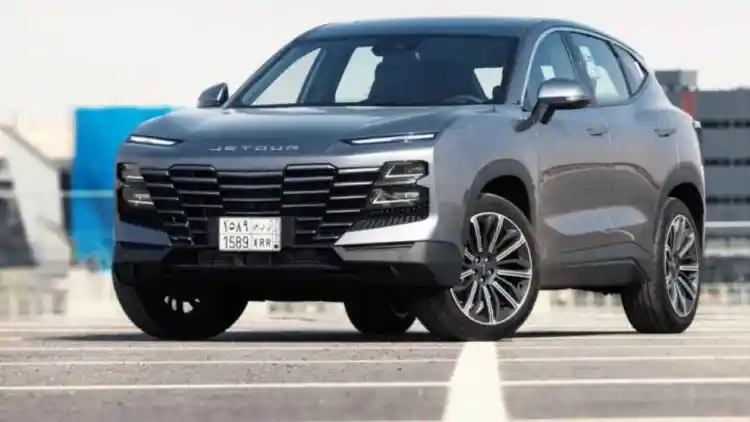- How to Handle Common Nissan Sentra Gearbox Issues
- 2025 Gearbox Maintenance Schedule Breakdown
- Technical Upgrades for Enhanced Performance
- Driving Habits That Protect Your Transmission
- Cost Comparison:Repair vs Replacement
- FAQ
Have you been struggling with unexpected shifts or delayed responses from your Nissan SentraUAE Nissan SentraEgypt Nissan SentraKSA Nissan SentraQatar Nissan SentraBahrain Nissan SentraKuwait Nissan SentraOman Nissan Sentra gearbox? This comprehensive guide is designed to help you understand your CVT transmission, address common shifting issues, and ensure your vehicle stays in top condition throughout its life.

How to Handle Common Nissan Sentra Gearbox Issues
Your Nissan SentraUAE Nissan SentraEgypt Nissan SentraKSA Nissan SentraQatar Nissan SentraBahrain Nissan SentraKuwait Nissan SentraOman Nissan Sentra gearbox is critical for smooth performance, and recognizing its early warning signs can save you time and money. Below are three key indicators that your CVT transmission may need attention:
Delayed acceleration response: If you notice a lag of over 1.5 seconds when accelerating, it might mean the system’s calibration needs a check.
Unusual whining noises: A persistent hum or whining noise—especially when driving uphill—can indicate internal stress in your gearbox.
Jerky gear transitions: Experiencing rough shifts when your speed is between 30-50 km/h may suggest shifting issues related to the gear ratios.
Taking immediate action when these symptoms occur can prevent more extensive damage. Here are some quick fixes to try at home:
Resetting transmission memory: Start your engine, press the brake, manually shift through all gears, then hold the gear in Park for about 30 seconds.
Fluid level check: Use the dipstick on a cold engine to ensure proper fluid levels. It’s advisable to perform this check monthly.
Smooth driving: Avoid sudden acceleration for at least 48 hours after noticing any symptoms to let the gearbox settle.
2025 Gearbox Maintenance Schedule Breakdown
Adhering to a structured maintenance schedule is essential. To help you plan, the table below outlines service intervals based on mileage, along with approximate costs (in AED/SAR) following GCC certification standards:
Mileage (km) | Service Required | Typical Cost (AED/SAR) |
|---|---|---|
30,000 | Fluid replacement | 350-500 |
60,000 | Filter change | 600-850 |
90,000 | Full diagnostic check | 1,200-1,700 |
For a hands-on approach, consider this DIY checklist:
Conduct a monthly visual inspection to spot potential leaks.
Update the transmission software quarterly via USB.
Schedule a bi-annual transmission flush; though professional service is recommended, it can help prolong gearbox life.
Technical Upgrades for Enhanced Performance
If you’re looking to boost the performance of your 2025 model, several aftermarket modifications can be both affordable and effective. Here are some upgrade options you might consider:
Enhanced cooling systems: Installing a dedicated cooling upgrade can stabilize your CVT performance, costing around 1,800-2,500 AED/SAR.
Revised gear ratio programming: Optimizing gear ratios for smoother transitions might run between 900-1,300 AED/SAR.
Vibration-dampening mounts: These mounts can reduce unwanted vibrations, typically priced between 450-700 AED/SAR.
Always opt for warranty-safe improvements by using Nissan-approved synthetic transmission fluids and OEM software patches, ensuring that any modifications align with your vehicle’s requirements under GCC standards.

Driving Habits That Protect Your Transmission
Simple yet effective changes to your driving style can extend the life of your gearbox. When navigating busy urban streets and highways, consider the following suggestions:
For city driving:
Engage the manual mode when you’re in heavy traffic to manage shifting more precisely.
Maintain a two-second gap between vehicles to minimize stop-start cycles.
Use Eco Mode on your dashboard to facilitate smoother gear shifts and reduce engine strain.
For highway driving:
Activate cruise control above 80 km/h to maintain steady speeds.
Allow a five-minute cool-down period after long trips to reduce heat buildup in the transmission system.
Keep your speeds below 140 km/h whenever possible to avoid excessive stress on the gearbox.
Cost Comparison:Repair vs Replacement
It’s important to evaluate whether repairing your gearbox or proceeding with a replacement is the best option. Consider these guidelines:
Repair may be favorable if:
Your vehicle has covered less than 160,000 km.
The issue is confined to a single component failure.
Your car remains under warranty.
Replacement might be necessary when:
Multiple system failures are present.
Repair expenses exceed 12,000 AED/SAR.
The vehicle is more than 8 years old and has seen considerable mileage.
Following these maintenance tips and upgrade suggestions can help you avoid unexpected breakdowns while ensuring your Nissan SentraUAE Nissan SentraEgypt Nissan SentraKSA Nissan SentraQatar Nissan SentraBahrain Nissan SentraKuwait Nissan SentraOman Nissan Sentra gearbox is always performing optimally.
FAQ
Q1:What are the common CVT transmission issues in my UAE Nissan SentraEgypt Nissan SentraKSA Nissan SentraQatar Nissan SentraBahrain Nissan SentraKuwait Nissan SentraOman Nissan Sentra?
A:Many owners notice issues such as unexpected delays in acceleration and unusual noises during operation. These symptoms are often early warnings of shifting troubles or improper gear ratios. Regular fluid checks and timely resets can help address these concerns. It’s also wise to perform monthly inspections and adhere to the maintenance lifecycle outlined above.
Q2:How often should I schedule maintenance for the 2025 model gearbox?
A:You should adhere to a structured schedule where every 30,000 km, a fluid replacement is recommended, followed by a filter change at 60,000 km, and a comprehensive diagnostic check at 90,000 km. These practices help ensure that your transmission system remains efficient and safe according to GCC certification standards. Regular checks can also preempt the onset of shifting issues.
Q3:Are aftermarket modifications safe without voiding my warranty?
A:When considering technical upgrades, it is important to choose warranty-safe improvements. Using Nissan-approved synthetic transmission fluid, OEM software patches, and professionally designed modifications can help you stay within warranty guidelines. Avoiding non-certified alterations minimizes the risk of complications. If in doubt, always consult your local dealer before proceeding.
Q4:What is the cost difference between repairing and replacing the gearbox?
A:Repair costs generally remain lower when issues are isolated and the vehicle mileage is below 160,000 km, often costing significantly less than 12,000 AED/SAR in total. However, when multiple components fail or the cost of repairs becomes excessive, a full replacement might be a more economic choice. Evaluating your vehicle's age and overall performance is crucial before making a decision.

Q5:How do gear ratios impact the overall performance of my UAE Nissan SentraEgypt Nissan SentraKSA Nissan SentraQatar Nissan SentraBahrain Nissan SentraKuwait Nissan SentraOman Nissan Sentra?
A:Gear ratios play a vital role in determining how efficiently power is transferred from the engine to the wheels. Imbalances or miscalculations in gear ratios can lead to unexpected engine loads and shifting issues. An optimized gear ratio can improve acceleration, fuel efficiency, and overall driving comfort. If you experience persistent issues, it might be time to look at revised gear ratio programming as part of your maintenance.
Note:This information is for reference only; please adhere to the latest local laws and regulations.
Read More:
2025 Toyota Hiace Warning Lights Guide
2025 Toyota Corolla vs Yaris:Choosing Perfect Compact Sedan
2025 Toyota Corolla Dashboard Cover Guide:Protect Your Car
2 / 5













